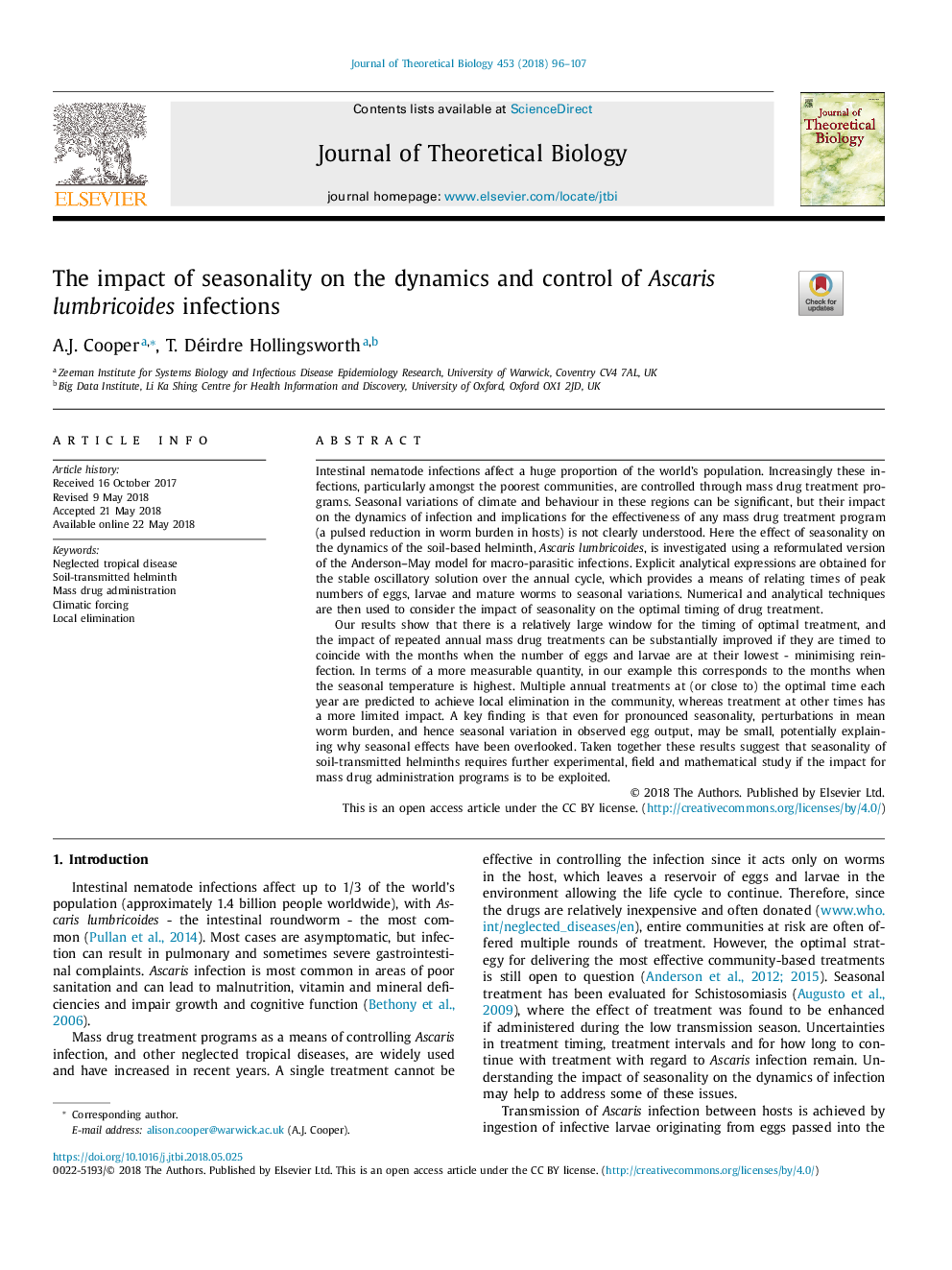| Article ID | Journal | Published Year | Pages | File Type |
|---|---|---|---|---|
| 8876609 | Journal of Theoretical Biology | 2018 | 12 Pages |
Abstract
Our results show that there is a relatively large window for the timing of optimal treatment, and the impact of repeated annual mass drug treatments can be substantially improved if they are timed to coincide with the months when the number of eggs and larvae are at their lowest - minimising reinfection. In terms of a more measurable quantity, in our example this corresponds to the months when the seasonal temperature is highest. Multiple annual treatments at (or close to) the optimal time each year are predicted to achieve local elimination in the community, whereas treatment at other times has a more limited impact. A key finding is that even for pronounced seasonality, perturbations in mean worm burden, and hence seasonal variation in observed egg output, may be small, potentially explaining why seasonal effects have been overlooked. Taken together these results suggest that seasonality of soil-transmitted helminths requires further experimental, field and mathematical study if the impact for mass drug administration programs is to be exploited.
Keywords
Related Topics
Life Sciences
Agricultural and Biological Sciences
Agricultural and Biological Sciences (General)
Authors
A.J. Cooper, T. Déirdre Hollingsworth,
